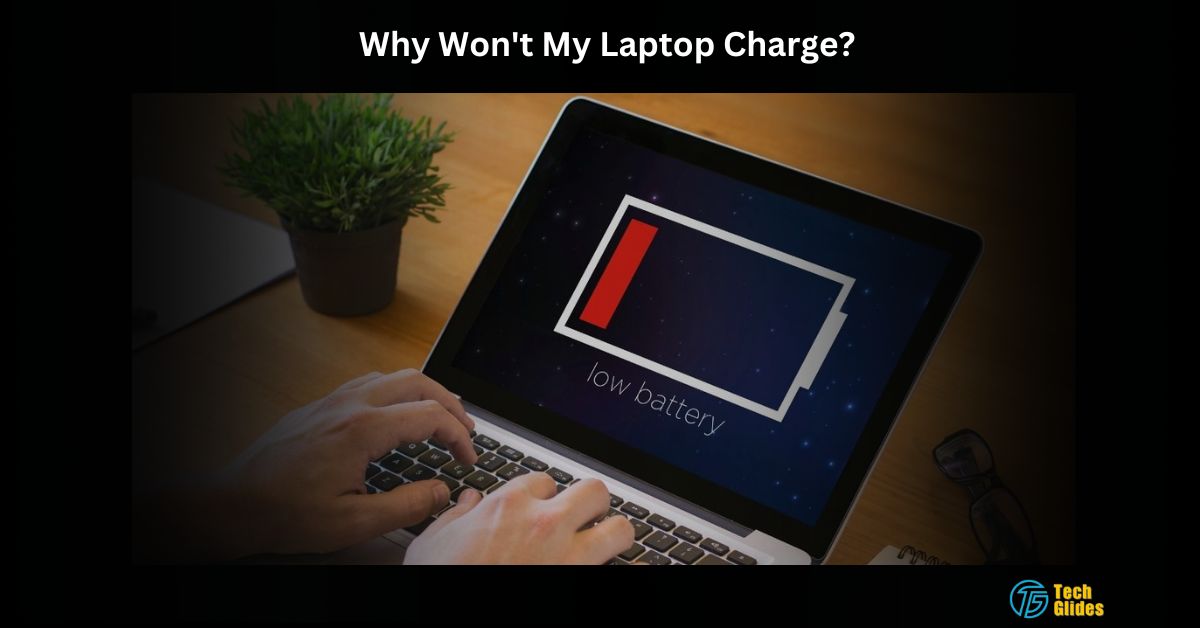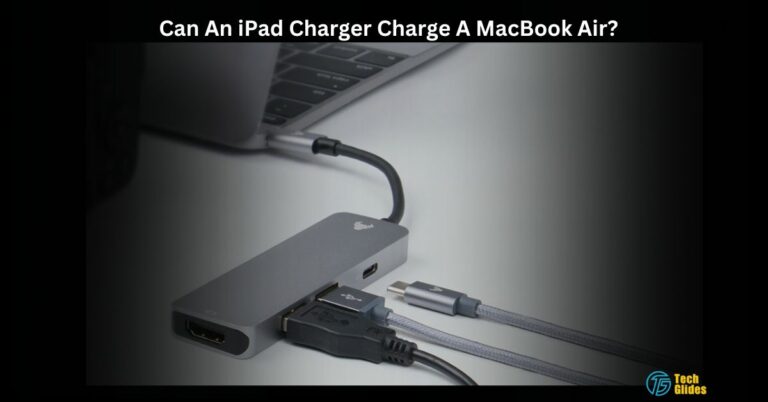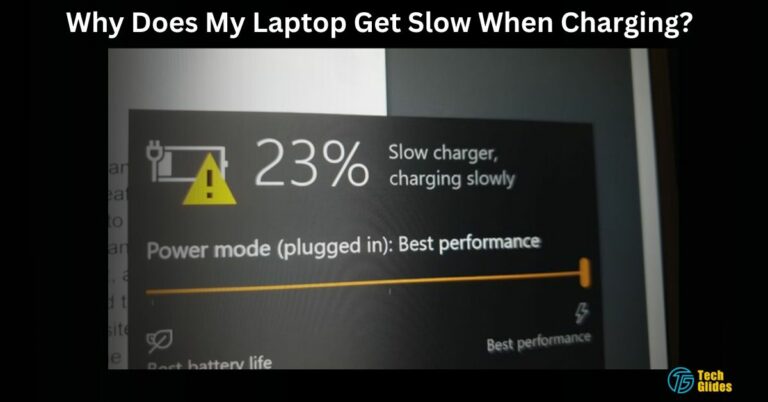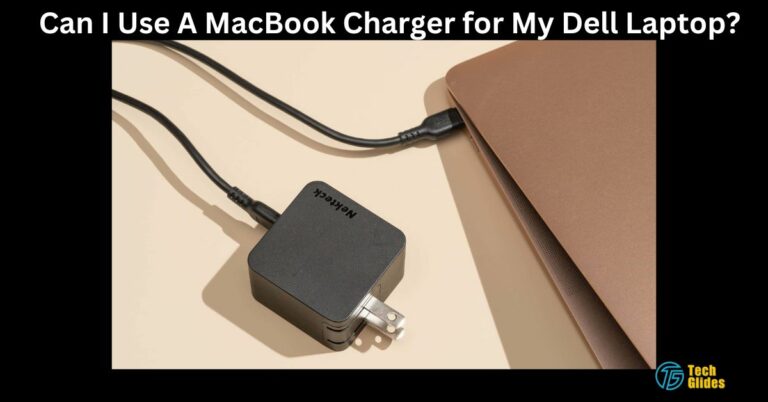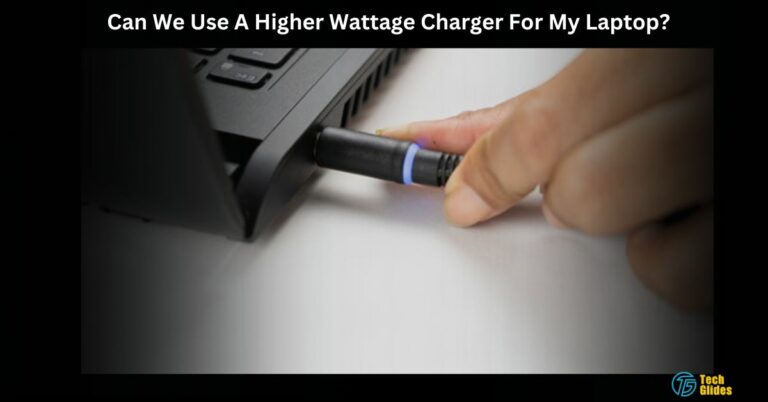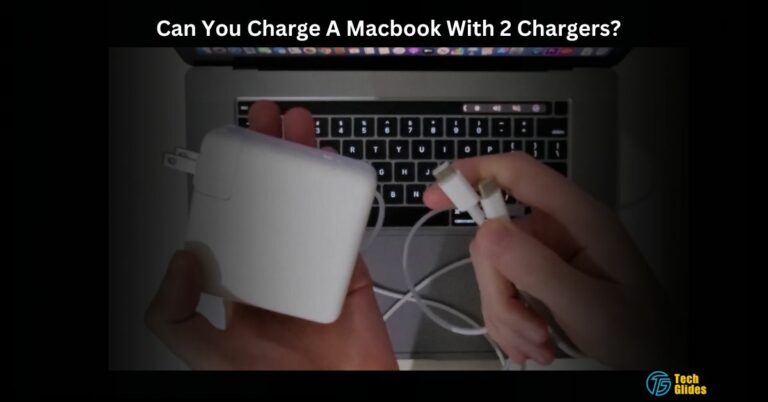Why Won’t My Laptop Charge? – All That You Seek!
Laptops are an essential part of my life, and when they refuse to charge, it can be a real head-scratcher. But fret not; I’ve got you covered.
If your laptop won’t charge, then connect the power cable properly to the wall outlet and the laptop. Try replugging and firmly connecting the cable. Check whether the wire Or port is damaged, and try reinstalling the battery driver in your PC.
In this guide, I will uncover why your laptop won’t charge and how to fix it so that you can revive your laptop quickly. Stay with me for the solution.
Contents
- Why is my laptop not getting power when plugged in? – Not Charging Even Plugged In!
- 1. A Common Culprit Of Laptop Not Charging Is Loose Connection:
- 2. When Laptop When Power Slowly Fades Is Must Be Due To Battery Issues:
- 3. One Common Reason For a Laptop Not Charging Is a Faulty Charger:
- 4. Furthermore, The Silent Laptop Charging Killer Overheating:
- 5. Last But Not The Least, One Of The Battery Driver Problems Software Snags:
- How To Fix A Laptop That Won’t Charge? – Detailed Troubleshooting Manual!
- Why Isn’t My Laptop Charging To 100%? – Check My Guide Also!
- What To Do I Do If My Laptop Charging Port Is Not Working?
- Why Won t My Laptop Charge Windows 10?
- How to fix an Asus laptop battery that won’t charge?
- HP Laptop Not Charging? What To Look For!
- My computer won’t charge. Why And How To Fix!
- Why Is My Lenovo Laptop Not Charging? – All The Lenovo Users!
- Frequently Asked Questions:
- 1. What’s The Reason My Hp Laptop Is Connected To The Charger But Not Charging?
- 2. Is It Possible To Use A Usb For Charging My Laptop?
- 3. Laptop Battery plugged in but not charging, struck at 18% plugged
- 4. Why is my laptop not charging when turned on?
- 5. Is 13252 charger?
- 6. My laptop fell off the bed, and it won’t charge. What should I do?
- 7. Laptop Battery Not Charging, 0 Percent:
- Heading To The Finish Lines:
- Also Read:
Why is my laptop not getting power when plugged in? – Not Charging Even Plugged In!
1. A Common Culprit Of Laptop Not Charging Is Loose Connection:
At some point Loose Connection is a common problem that can leave you feeling frustrated and helpless. Your laptop’s charging port is like its power gateway. It’s where your charger connects to provide power. Thus, A loose charging port can result from wear and tear, causing its internal components to shift or misalign.
This weakens the connection between the charger and the port, leading to an unreliable power supply and an inability to charge your laptop. To address this issue, Begin by carefully examining the charging port on your laptop. And Follow the Tips I have provided below!
Do You Know? DigitalNewsAlerts – Your Instant Gateway To Current Affairs And Laptop Updates!
2. When Laptop When Power Slowly Fades Is Must Be Due To Battery Issues:
Moreover, Over time, laptop batteries wear out, making charging less effective. If your laptop used to last longer on a single charge but now runs out quickly, or if it struggles to charge fully, it’s a sign of battery trouble.
Battery degradation happens due to chemical reactions in the battery, heat damage, and the number of charge cycles. When your laptop’s battery ages, it can’t hold as much power as it once did. If you notice these signs, it might be time for a new battery.
Never Miss: What Is Aafp On The Motherboard – Do You Know!
3. One Common Reason For a Laptop Not Charging Is a Faulty Charger:
Another possible cause of a laptop not charging is a faulty charger. When your charger isn’t working correctly, it can mess up your laptop’s charging. To see if the charger is causing the problem, you can try these steps.
First, test the charger on another laptop. If it charges that laptop, it might not be the charger’s fault. Alternatively, you can borrow a friend’s charger and see if it works with your laptop to cross-check if your charger is the issue.
Also Read: Can An iPad Charger Charge A MacBook Air? – 2024 Guide!
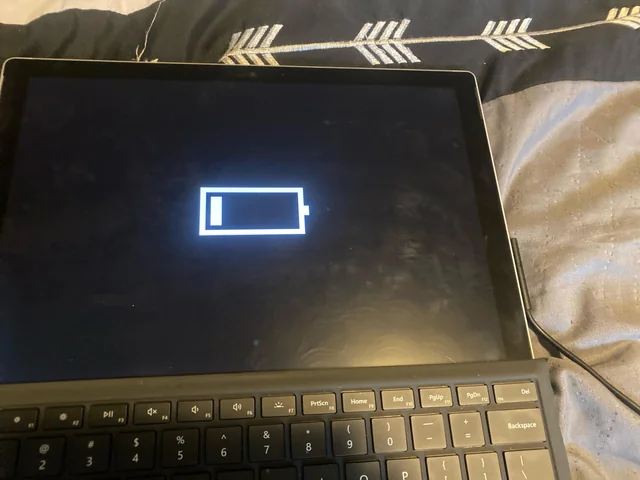
4. Furthermore, The Silent Laptop Charging Killer Overheating:
Additionally, Overheating can quietly cause issues with charging your laptop. When your laptop gets too hot, it might automatically stop charging to prevent any harm. To tackle this problem, it’s important to ensure proper ventilation for your laptop.
Take a close look at how and where your laptop is positioned. Make sure it has enough space around it to release heat effectively. If you often use your laptop on soft surfaces like beds or sofas, consider investing in a cooling pad.
Have You Explored? Can You Charge A Macbook With 2 Chargers? – Safety Guide!
5. Last But Not The Least, One Of The Battery Driver Problems Software Snags:
In The End, Another issue to consider is outdated or corrupted battery drivers, which might cause charging problems. Fortunately, solving this is usually quite simple. Thus, You can update your drivers by visiting your laptop manufacturer’s website and downloading the latest drivers designed for your laptop model.
Just Installing these fresh drivers often does the trick and helps resolve charging-related problems. It’s a quick and effective solution that ensures your laptop works smoothly.
And There You Have It! Now that you know the possible reasons for your laptop’s charging problem. Also, if you want to watch this in action, be sure to click on the YouTube link!
How To Fix A Laptop That Won’t Charge? – Detailed Troubleshooting Manual!
Check Whether It Is Plugged In Properly Or Not
First of all, I recommend you guys to Ensure that your laptop is properly plugged in is the first step in troubleshooting charging issues. A loose connection can lead to intermittent charging or no charging at all. Make sure the charging cable is securely inserted into both the laptop and the power outlet. Additionally, try a different power outlet to eliminate the possibility of a faulty socket.
Replace The Damaged Charger Wire
Now, Keep in mind that, A damaged charger wire can disrupt the flow of power to your laptop. Examine the cable for any visible signs of wear, such as frayed or exposed wires. If you find any damage, replace the charger with a new one. Using a damaged charger not only jeopardizes the charging process but can also pose a safety risk.
Make Sure You’re Using the Right Port
Laptops often come with multiple ports, including various USB-C or other charging ports. Using the correct port is crucial for efficient charging. Refer to your laptop’s manual to identify the designated charging port. Some laptops prioritize specific ports for charging, so plugging into the correct one can make a significant difference.
Related Post: How Can We Charge My Laptop If The Charger Port Is Broken? – Check This Out!
If There’s an Issue In the Charging Port, Then Get a New Slot!
A loose or damaged charging port can hinder the charging process. If your laptop’s charging port is visibly damaged or feels unstable, seeking professional help is advisable. Technicians can repair or replace the charging port, ensuring a secure and stable connection for the charger.
Go For A Battery Checkup:
Over time, laptop batteries can degrade, leading to charging issues. A professional battery checkup can assess the health of your battery. If the battery is identified as the culprit, replacing it with a genuine and compatible replacement is essential for restoring proper charging functionality.
1. Replace the Faulty Battery Of the Laptop
If the battery is found to be faulty during the checkup, replacing it is crucial. A worn-out battery may not hold a charge, leading to frequent discharges. Choose a replacement battery recommended by the laptop manufacturer to maintain compatibility and performance.
2. Reinstalling The Battery Driver Can Also Assist
Battery drivers play a role in managing the charging process. Reinstalling the battery drivers can resolve issues related to driver corruption or conflicts. In the Device Manager, locate the battery section, uninstall the drivers, restart your laptop, and let the system automatically reinstall the drivers. Although these methods can be different on different devices, I’ve compiled here some common steps that will assist you. So, Take a look below!
- Access Device Manager: Press the Windows key + X and select Device Manager.
- Locate Battery Section: Now, Expand “Batteries” section.
- Uninstall Battery Drivers: Right-click on each battery entry and choose “Uninstall device.”
- Restart Laptop: Click “Start,” select “Power,” and choose “Restart.”
- Automatic Reinstallation: Upon restart, the System will automatically reinstall drivers.
- Verify Installation: Check Device Manager to ensure drivers are reinstalled.
- Check Charging: Connect the charger and monitor charging functionality.
3. Let The Laptop Battery Cool Down if Heated up
Excessive heat can negatively impact battery health and charging efficiency. If your laptop becomes hot during use, power it off and allow it to cool down before attempting to charge it again. Consider using a cooling pad to prevent overheating during prolonged usage.
Update The Drivers
Outdated or incompatible drivers can lead to charging problems. Regularly check the laptop manufacturer’s website for the latest driver updates, especially those related to power management and battery. Updating drivers ensures optimal compatibility and performance.
You Also Have To Check: Why Is My Docking Station Not Charging My Laptop – A Detail Guide In 2024!
Make Sure Laptop Is Not Overheated!
Last but not least, Overheating is a common cause of battery and charging issues. Dust accumulation in the cooling vents can restrict airflow, leading to overheating. Regularly clean the vents and ensure proper ventilation. Using a laptop cooling pad can help maintain a lower operating temperature, improving overall system performance.
And Voila! By following these steps systematically, you’ll successfully resolve the laptop charging issue. To connect with fellow enthusiasts on the topic, simply click on the Quora link I’ve provided.
Why Isn’t My Laptop Charging To 100%? – Check My Guide Also!
Now, This is the most common reason almost every charger or laptop has. So, There are several factors that can contribute to a laptop not charging to 100%. One common reason is battery calibration, where the system may need recalibration to accurately display the battery level. Additionally, prolonged use of battery power or charging habits can lead to capacity loss over time. In some cases, a faulty battery or charging circuitry may be the culprit.
To address this issue, consider recalibrating the battery, adjusting power settings, or seeking professional assistance if the problem persists. If You Are A Lenovo laptop user, then you can definitely navigate to my guide over Why Is My Lenovo Laptop Not Charging To 100? And see how the things are working!
What To Do I Do If My Laptop Charging Port Is Not Working?
If your laptop charging port is not working, start by checking for physical damage or debris. Ensure the charging cable is securely connected, and try a different outlet. If the issue persists, it may indicate a damaged port or internal connection problem. Consider consulting a professional technician or the laptop manufacturer for a thorough inspection and potential repair or replacement of the charging port.
You have to Read: Why Does My Laptop Turn Off When I Plug the Charger? – Step-By-Step Guide In 2024!
Why Won t My Laptop Charge Windows 10?
- Check Power Outlet and Cable: Ensure the power outlet is functional, and the charging cable is not damaged.
- Inspect Charging Port: Examine the laptop’s charging port for any visible damage or debris.
- Update Drivers: Go to Device Manager and update battery and power-related drivers.
- Calibrate Battery: Recalibrate the battery through power settings to resolve inaccurate charging readings.
- Professional Assistance: If issues persist, seek help from a technician or the laptop manufacturer for further diagnosis and potential repairs.
How to fix an Asus laptop battery that won’t charge?
If your Asus laptop battery won’t charge, start by checking the charging cable and power outlet. Make Sure there is no physical damage to the cable, and try a different outlet. If the issue persists, recalibrate the battery through power settings, update device drivers, and consider resetting the laptop’s power management settings. If these steps don’t resolve the problem, consult Asus customer support or a professional technician for assistance in diagnosing and fixing potential hardware issues.
HP Laptop Not Charging? What To Look For!
- Verify Power Connection: Confirm a secure connection between the charging cable, laptop, and power outlet.
- Examine Cable and Adapter: Inspect the charging cable and adapter for any visible damage or wear.
- Reset Power Settings: Reset power management settings on the laptop, and update battery-related drivers.
- Perform Battery Test: Use HP’s built-in battery test utility or consult HP support for further diagnostics and potential battery replacement.
Interesting Fact: Can I Use A 100W Charger For A 65W Laptop – Charge Confidently!
My computer won’t charge. Why And How To Fix!
If your computer won’t charge, several factors could be at play. First, check the power outlet, charging cable, and connection to ensure everything is intact. Examine the charging port for any damage or debris. Try an alternate outlet and cable to rule out issues with either. If the problem persists, consider recalibrating the battery, updating device drivers, or seeking professional assistance for a thorough diagnosis. In some cases, it may be necessary to replace a faulty battery or charging component to restore normal charging functionality.
Why Is My Lenovo Laptop Not Charging? – All The Lenovo Users!
If your Lenovo laptop is not charging, start by checking the power source, cable, and charging port for any issues. Ensure the power outlet is functioning, the cable is undamaged, and the port is free of debris.
Try using a different outlet and cable if needed. Update battery and power-related drivers through Device Manager, and consider recalibrating the battery through power settings. For more detailed troubleshooting steps and solutions, please refer to the comprehensive guide provided in the article titled “Why Is My Lenovo Laptop Not Charging.”
Frequently Asked Questions:
1. What’s The Reason My Hp Laptop Is Connected To The Charger But Not Charging?
This situation can result from a faulty charger, a damaged charging port, or issues with the laptop’s battery. To identify the exact cause and resolve the problem, it’s essential to explore each of these possibilities step by step.
2. Is It Possible To Use A Usb For Charging My Laptop?
Yes, you can charge some laptops using a USB-C or USB-A port, but it depends on your laptop model and its charging capabilities.
3. Laptop Battery plugged in but not charging, struck at 18% plugged
This issue may indicate a battery calibration problem. Try recalibrating the battery through power settings or seek professional assistance for further diagnosis.
4. Why is my laptop not charging when turned on?
Laptop Not Charging When Turned On, Then Check for driver issues in Device Manager, update power-related drivers, and ensure the charging cable and port are functioning properly. If problems persist, consult a technician.
5. Is 13252 charger?
No, it’s not a code for the charger, It’s basically a pair of digits that come in the HP Power code. For further details, you can explore Amazon and get the right power code for your HP Laptop.
6. My laptop fell off the bed, and it won’t charge. What should I do?
A fall could damage internal components. Inspect for physical damage, try a different charging cable/outlet, and if issues persist, seek professional repair.
7. Laptop Battery Not Charging, 0 Percent:
A drained or faulty battery could be the cause. Attempt to jump-start the battery by connecting the laptop to the charger and restarting it. If the issue persists, consider recalibrating the battery through power settings or contact the laptop manufacturer for further assistance and potential battery replacement options.
Heading To The Finish Lines:
In the end, Your laptop might not charge because the charger is dead, connections are loose, or the charger is old. To figure out the problem, examine your laptop’s connections, adapter, and charger for issues.
So, don’t let charging issues get you down – take action today and get back to your digital adventures in no time. Happy computing!

